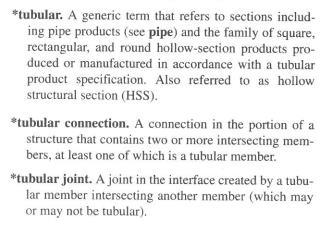Thanks John!
So Tubular Connections covers base plates welded to HSS columns, with regard to undercut, and Table 6.1 doesn't? For some reason, I'd always thought 9.16 applied strictly to HSS to HSS
I see that (7) is not applicable, so then, what is applicable? What dictates acceptable / rejectable undercut if Table 9.16 (7) doesn't?
I'm going out to a jobsite after work to discuss with the third party inspector, who insists that the undercut on a few of the base plates are rejectable. From my understanding, his basis for rejection is Table 6.1, which is not applicable if they're nontubular static and cyclic, but again, what criteria in D1.1 is imposed with regard to undercut? It appears that neither of the two tables... 6.1 and 9.16 are applicable, so what is, with regard to undercut?
What am I missing?


